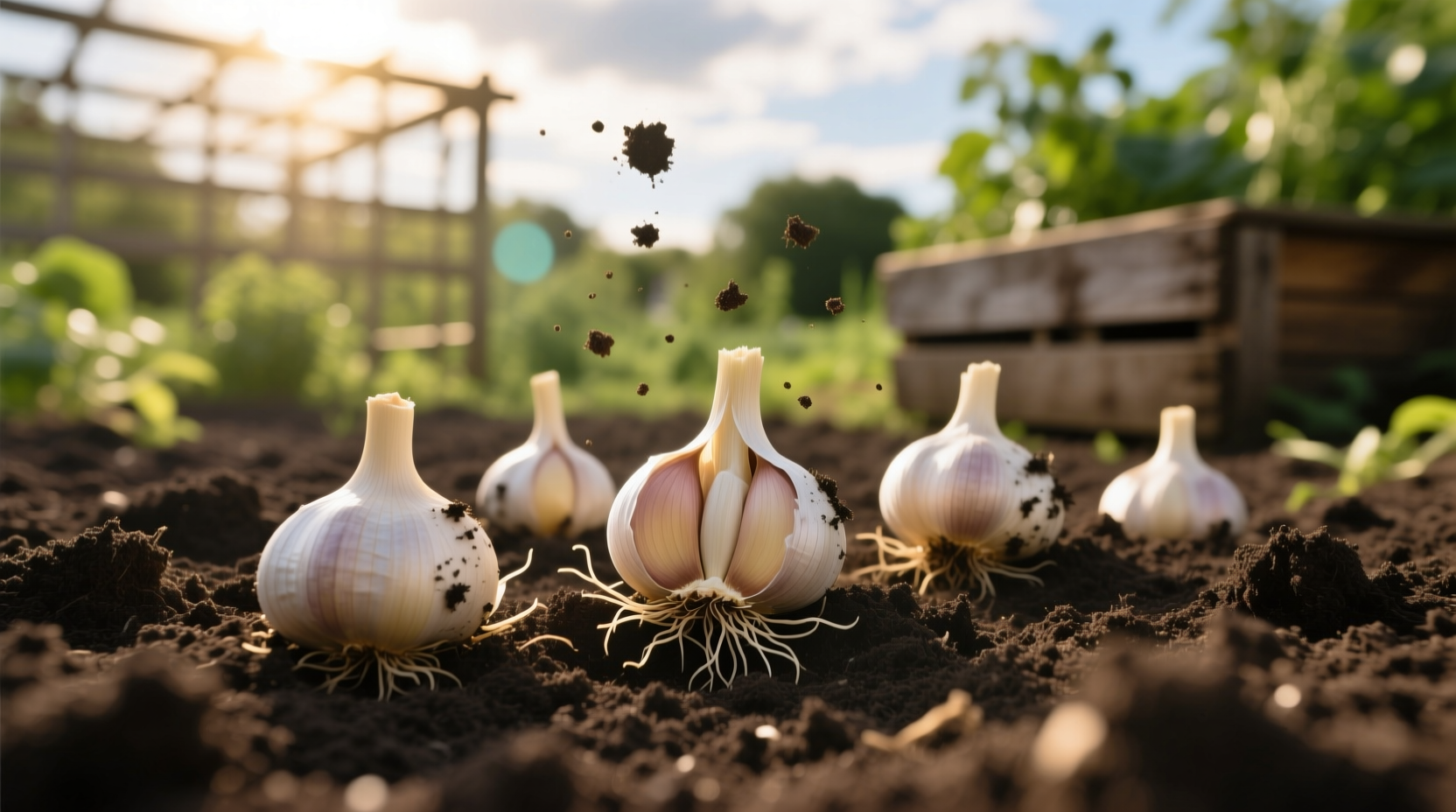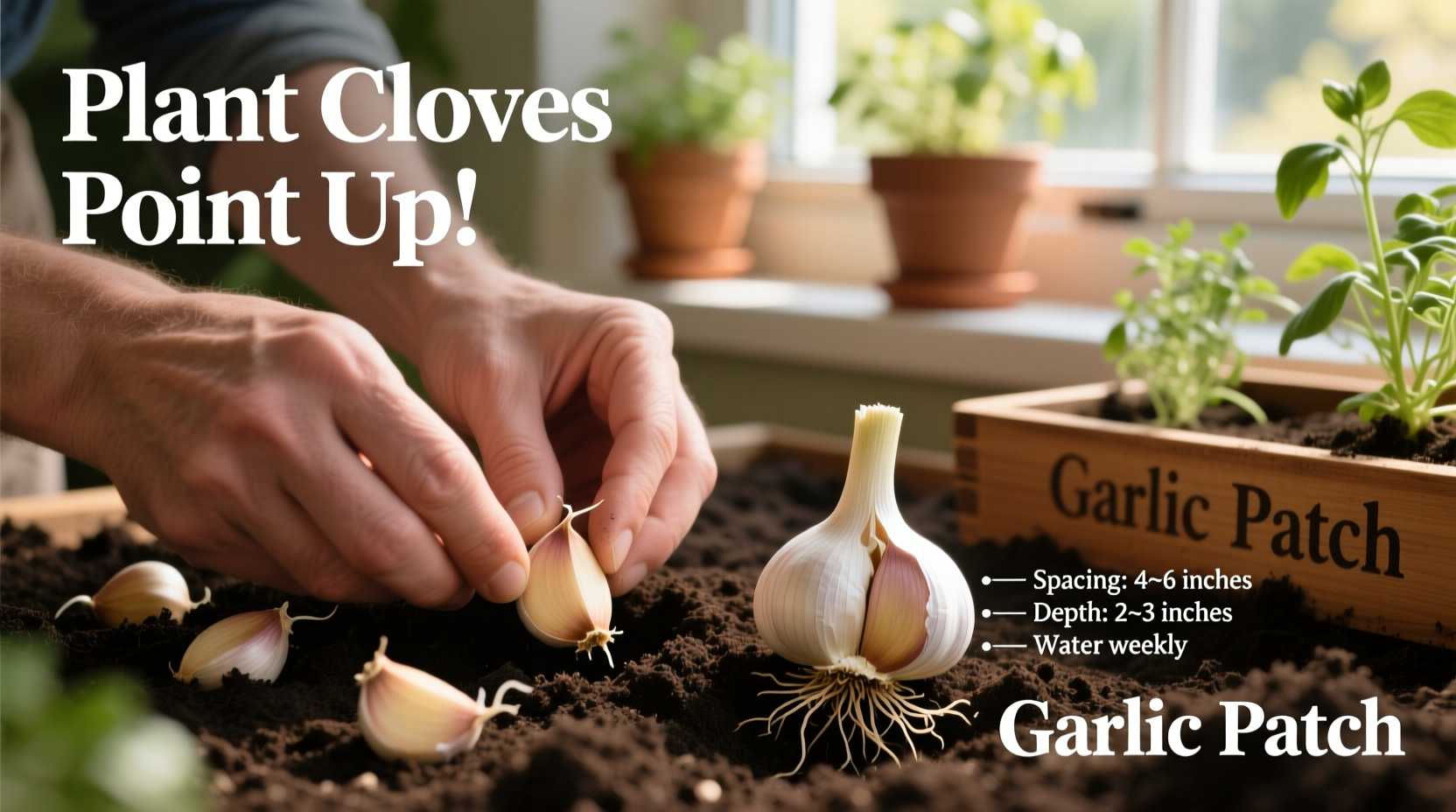Discover the satisfaction of harvesting your own homegrown garlic with this comprehensive guide. Whether you're a beginner gardener or expanding your backyard harvest, growing garlic at home delivers superior flavor, saves money, and connects you to an ancient culinary tradition practiced for over 5,000 years.
Why Grow Garlic at Home?
Homegrown garlic offers distinct advantages over store-bought varieties. You'll experience richer flavors, avoid chemical sprays used to prevent sprouting in commercial garlic, and enjoy the satisfaction of harvesting your own crop. According to the University of Minnesota Extension, home gardeners can grow varieties unavailable in supermarkets that offer unique flavor profiles from mild to intensely pungent.

Understanding Garlic Planting Timelines
Timing is critical for successful garlic cultivation. Unlike most garden plants, garlic follows a unique seasonal pattern:
| Season | Key Activity | Timeframe |
|---|---|---|
| Fall | Planting | 4-6 weeks before first frost (Sept-Oct in most zones) |
| Winter | Dormancy | Garlic establishes roots but remains dormant |
| Spring | Growth phase | Active leaf growth begins as temperatures warm |
| Early Summer | Harvest | When 1/3 of leaves turn brown (June-July) |
Selecting the Right Garlic Variety
Not all garlic is created equal. Understanding the two main types helps ensure gardening success:
- Hardneck Garlic - Better for cold climates, produces edible scapes, typically stronger flavor, stores 4-6 months
- Softneck Garlic - Ideal for warmer regions, longer storage (9-12 months), more cloves per bulb, braiding-friendly
For most home gardeners, hardneck varieties like 'Music' or 'German Extra Hardy' deliver exceptional flavor and adapt well to various climates. The Oregon State University Extension recommends selecting varieties proven in your specific hardiness zone for best results.
Preparing Your Garlic Bed
Garlic thrives in well-prepared soil. Follow these preparation steps 2-3 weeks before planting:
- Choose a sunny location with 6-8 hours of direct sunlight daily
- Test soil pH (ideal range: 6.0-7.5) using a home testing kit
- Amend soil with 3-4 inches of compost or well-rotted manure
- Create raised beds 6-8 inches high for improved drainage
- Mix in 1 pound of blood meal or complete organic fertilizer per 100 square feet
Planting Garlic: Step-by-Step
Follow these precise steps for successful garlic planting:
- Separate cloves - Break bulb into individual cloves 1-2 days before planting (keep papery skin intact)
- Select planting stock - Use only the largest, healthiest cloves from outer bulb layers
- Determine depth - Plant cloves 2-3 inches deep (deeper in colder climates, shallower in warmer zones)
- Position correctly - Place cloves pointy-end up, flat root-end down
- Space properly - Allow 4-6 inches between cloves, 12-18 inches between rows
- Cover and mulch - After planting, cover with soil and apply 3-6 inches of straw or leaves
Seasonal Care Requirements
Garlic needs minimal maintenance but specific seasonal attention:
- Fall/Winter - Water only if rainfall is less than 1 inch per week; mulch heavily before ground freezes
- Spring - Remove mulch when shoots emerge; water 1 inch per week; fertilize with nitrogen when leaves reach 6 inches
- Summer - Stop watering 2-3 weeks before harvest; cut scapes from hardneck varieties when they curl
Harvesting and Curing Your Garlic
Timing your harvest correctly ensures maximum flavor and storage life:
- Harvest when 1/3 of leaves turn brown (typically June-July)
- Carefully dig bulbs using a garden fork to avoid damage
- Cure bulbs in a warm, dry, shaded area with good airflow for 2-3 weeks
- Trim roots and stems after curing; store in mesh bags at 55-65°F with 60-70% humidity
Common Garlic Growing Challenges
Understanding these context boundaries helps prevent common problems:
- Watering mistakes - Overwatering causes rot; underwatering produces small bulbs
- Pest issues - Rotate crops annually to prevent onion maggots; use row covers for aphids
- Climate limitations - Softnecks struggle in cold zones; hardnecks may not form bulbs in warm climates
- Soil problems - Heavy clay requires additional drainage; sandy soil needs more frequent watering
Troubleshooting Guide
Address these common issues with targeted solutions:
- Small bulbs - Usually caused by late planting, poor soil nutrition, or overcrowding
- Mold on bulbs - Indicates excessive moisture during growth or improper curing
- No bulb formation - Often occurs when using grocery store garlic (treated to prevent sprouting)
- Yellowing leaves - Could signal nutrient deficiency or fungal disease











 浙公网安备
33010002000092号
浙公网安备
33010002000092号 浙B2-20120091-4
浙B2-20120091-4